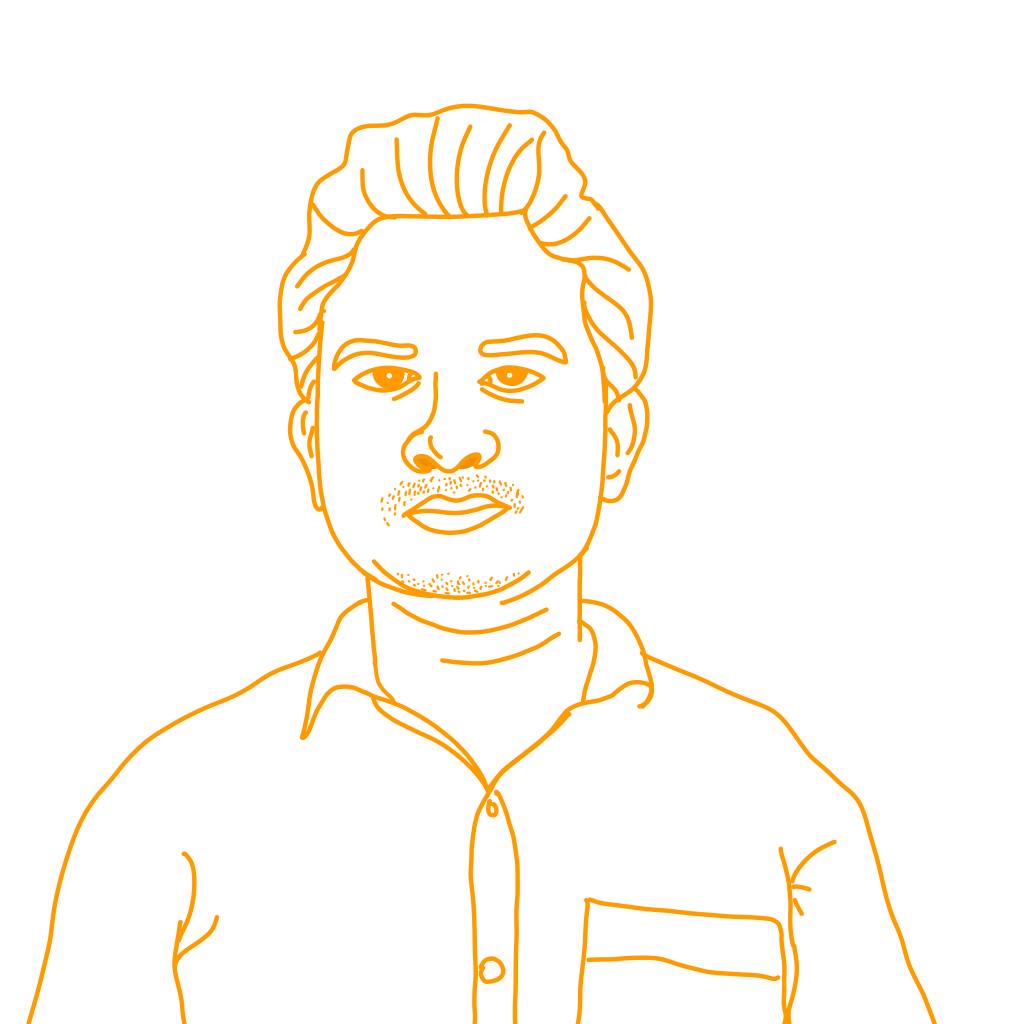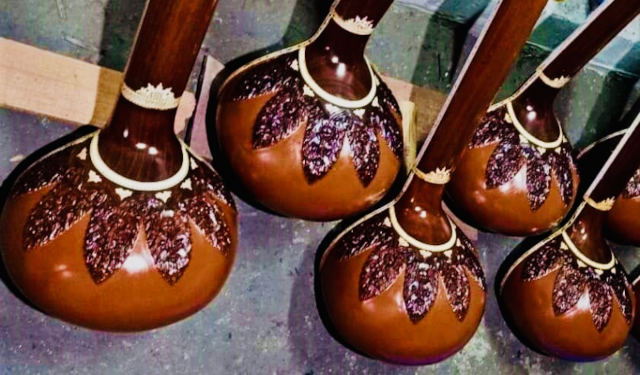At first it is acknowledged and appreciated to those “Sitar Makers”/ Craftsperson of Dadpur (Uluberia, Kolkata) who extend their helping hand to learn the most of their Craft. This content mainly explores the history of Dadpur Craft, the Current standpoint of craftsmen, and the philosophical existence of craft. Late Shri Tarapada Halder is the individual at the center of the Study. As a prominent craftsmen who lived in Dadpur Village, his input was then to flourished the craft by recruiting the youths of Village for assistance and taught them the art of making stringed instrument. His immense dedication in sharing the skills from teacher to student expand upon the new generation of youths who translate their craft in order to Continue their Tradition. Improvisation as a social. Extends the scholarly research and personalized ethnography to complete the content.
Dadpur is a medium size village located in Uluberia- 1 Block of Howrah District, West Bengal with approximately 300 Families residing. Dhulashimla is the Gram Panchayat of Dadpur Village. This Village is more or less an agriculture based area and the People are largely dependent on agriculture for their Livelihood.

The Total Geographical Area of Village is approximately 55 hectares. Uluberia is Nearest town to Dadpur which is approximately 8kms away.Nearest Railway Station is Dadpur, which is within the Village,Pin Code of Dadpur Village is 711322.As per constitution of India and Panchyati Raj Act, Dadpur Village is administrated by Sarpanch who is elected representative of village. If one can consider the work profile of Dadpur village it is seen that, 95.15% of workers describe their work as main work as cultivators and rest agricultural labourer.
There is not any large scale industry in the District,in this Village most of the villagers are from schedule Caste (99%) of total population in Dadpur village. The climate of Dadpur village is mainly warm and average temperature is 25° C.
History of dadpur craft
I am always Keen of “Sitar” and whenever I visit any such places where the craft is available, I collect them if possible. Dadpur Village of Uluberia is the centre of growing industry for Indian Musical Instruments where majority of inhabitants Earn their living from making musical instruments. Consequently, the village has emerged as a major exporter of instruments and their various Parts. Since Last few Decades, this remote village has started its own model of a home-grown music industry.

Tarapada Halder, a native of Dadpur village has started off this flourishing trade. This was way back in the Mid-20th Century when the Music Industry was undergoing a massive change. There hardly existed any shop for buying such instruments. Most importantly, none of them had an individual manufacturing unit. Their business just dealt with buying and selling according to market demand.
Tarapada Halder left for Lucknow and spent a lot of time in Grasping the Nature of this trade. He could comprehend and develop a command over the business of musical instruments very well. He returned from Lucknow and engaged in manufacturing them himself.
Next, he went to recruit the youths of Dadpur Village for Assistance and taught them the art of making musical instruments. He used to export the Manufactured instruments to Banaras and Lucknow. Later, most of his students became craftsmen themselves who were adept in making a variety of musical instruments.
Gradually, over the Passage of time Dadpur became the paradise for musicians. Today, it has around 10 factories, skillful craftsmen, and exports to major markets of India and the World.
In the last few decades, Dadpur has experienced a sudden boom and primarily exports string instruments.
Every craftsman of the village is a direct pupil of Tarapada Halder. Everyone in the village looks up to him greatest reverence as he transformed the ordinary village into something highly extraordinary.
The established instrument trade also ensures a comfortable livelihood for all. However, after the instrument made by them are sold to instrument companies, the craftsmen hardly get any credit or acknowledgement. They start getting paid after devoting many years in learning the process. This at times prevents youths, of the village from joining this trade.


 The tradition of Indian Lacquered Toys
The tradition of Indian Lacquered Toys